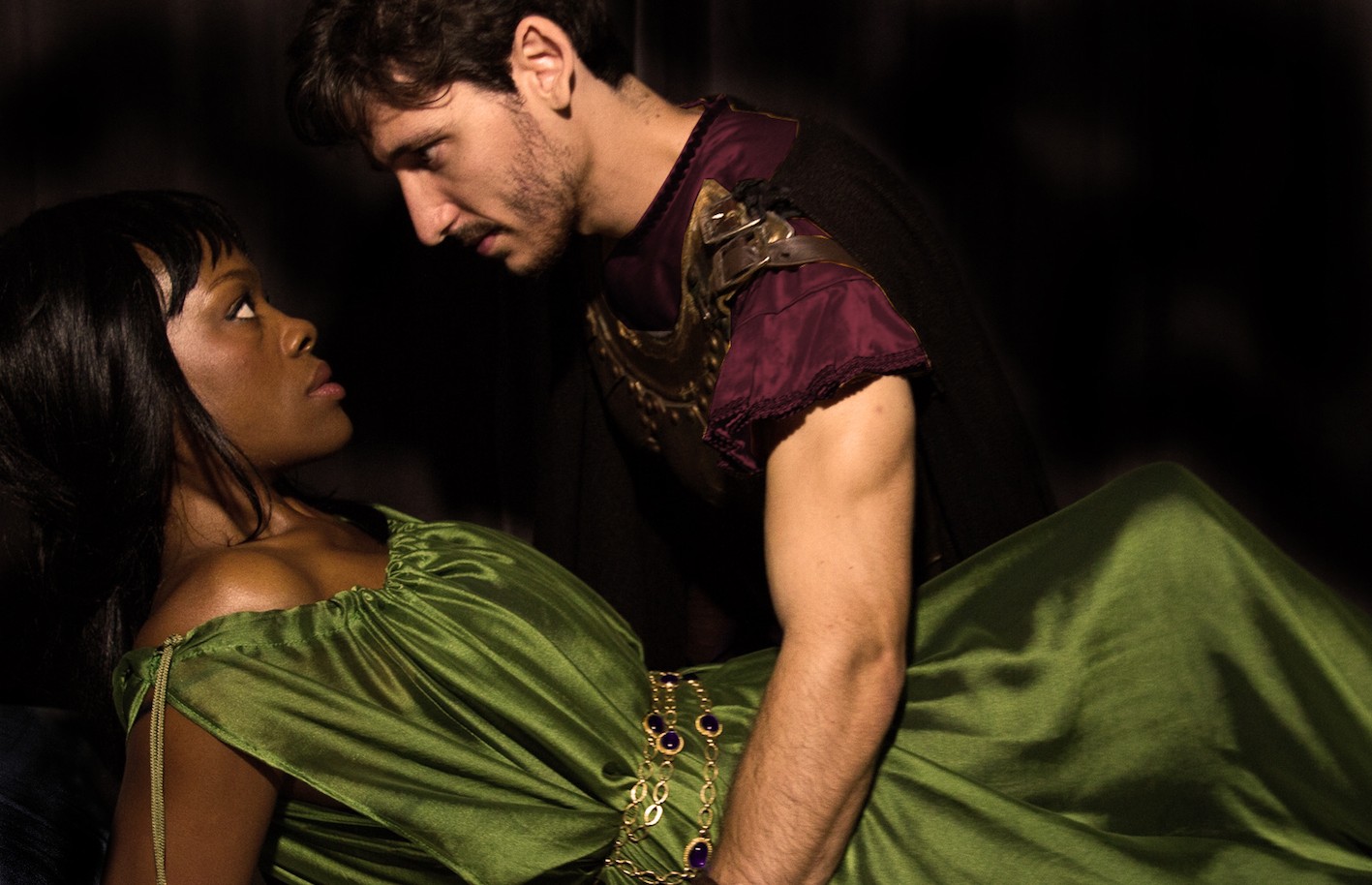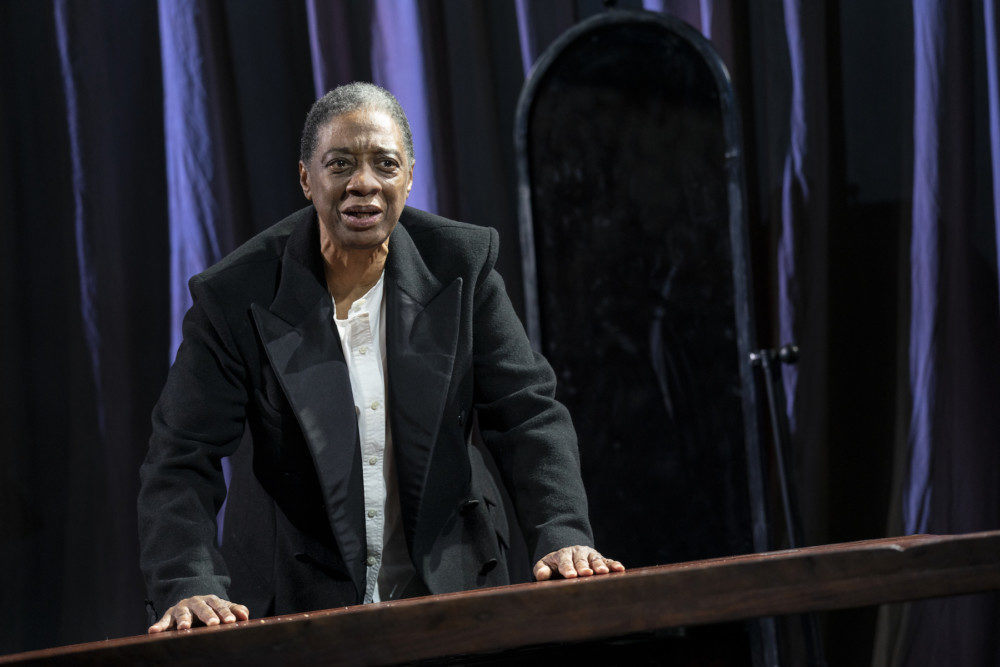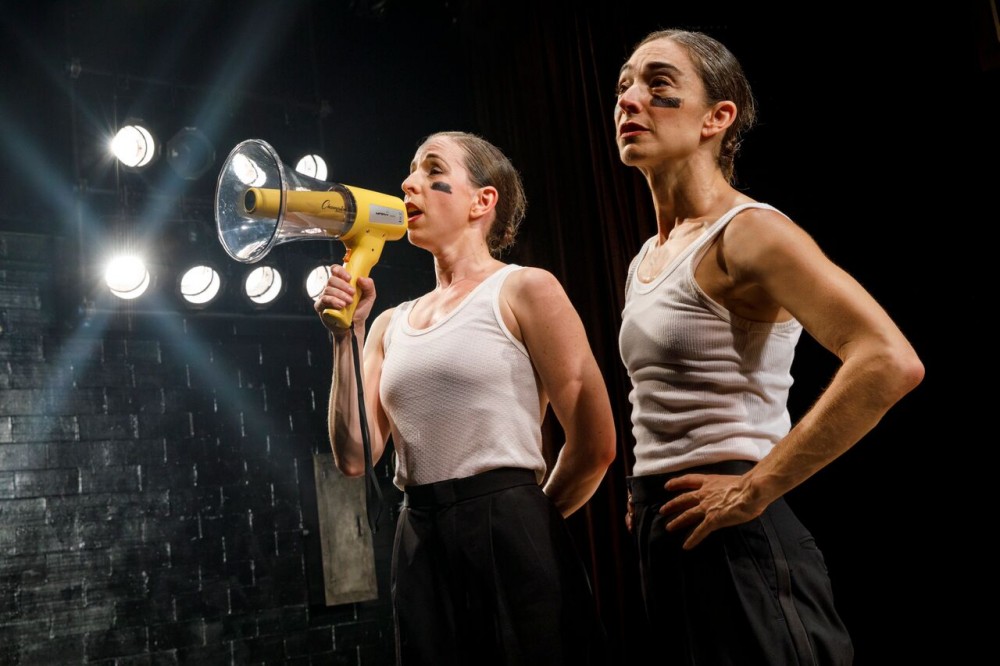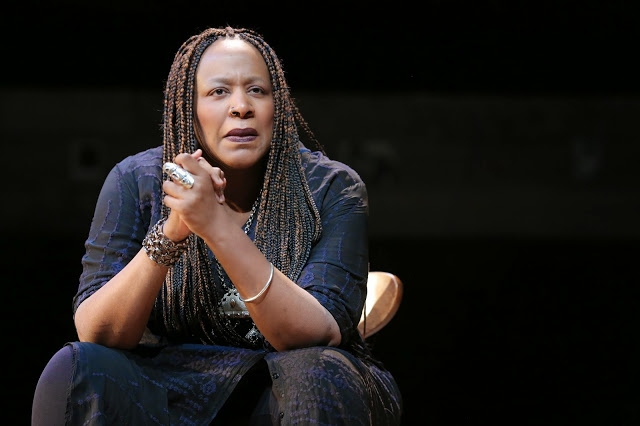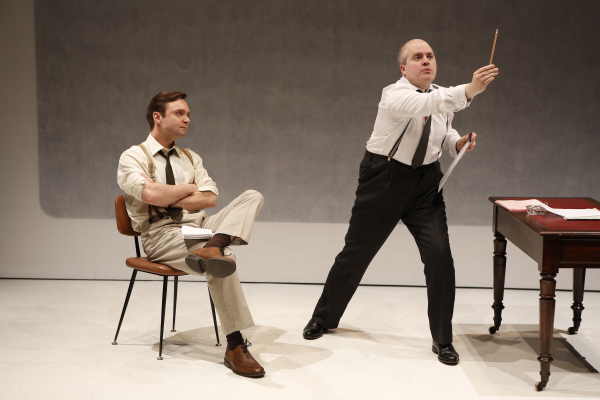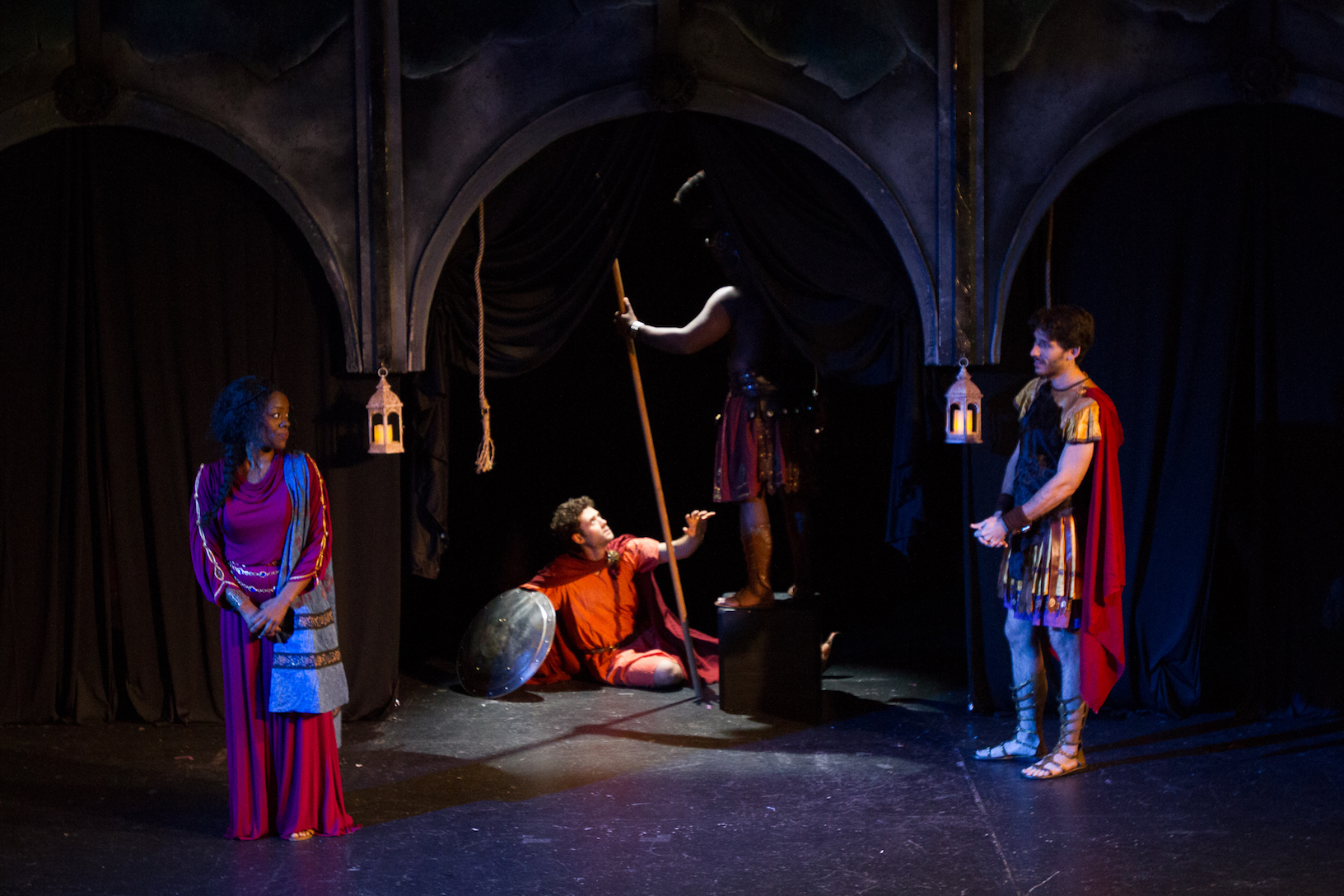

by JK Clarke
There is no Shakespeare company in New York (and likely few elsewhere) as dedicated to plumbing the depths and exploring every dimension of the works of William Shakespeare as the New York Shakespeare Exchange (NYSX). Helmed by the committed and daring Ross Williams, the company doesn’t generally dwell in the realm of the easy crowd pleasers (Romeo and Juliet, Macbeth, Twelfth Night, etc.); even if they do, like in last season’s Hamlet^10, it’s surely to be a novel approach (in this case, adventurously, all 10 actors in the cast played Hamlet). Rather, the most mainstream would be their terrific exploration of the relatively unknown Titus Andronicus in 2014. But they seem even more compelled by the fringes of the Bard’s work, such as The Sonnet Project (short films based on all 154 Sonnets); ShakesBEER pub crawls; and most recently the incredibly ambitious project of taking Shakespeare’s 1855-line narrative poem, The Rape of Lucrece and (with the aid of playwright Kevin Brewer) turning it into a play. Wow. Although it’s surely not the first time this has been done, it’s definitely a rarity.
The Rape of Lucrece, based on real events in 509 BC—just prior to the establishment of the Roman Republic—is a grim, tough story (and an historically important one that Shakespeare used or referenced in his plays, particularly Cymbeline). In this adaptation (which follows fairly closely the poem’s storyline), one evening following a battle, a high ranking Roman soldier, Collatinus, brags to his companions of his wife Lucrece’s beauty and chastity. The other soldiers lay odds that their wives are more devoted. So they, along with their pal, the Prince Sextus Tarquinius, run back to their town to spy on their wives so they can settle the wager. Lucrece turns out, of course, to be exactly as Collatinus said, and he wins the bet and the soldiers return to their battlements. But the narcissistic and entitled prince can’t stand it. Under false pretenses he returns to attempt to woo Lucrece. When she refuses him, he’s embittered and sneaks into her bedroom to rape her. Mortified with shame, Lucrece kills herself in the morning after he has fled. Eventually, her friends take revenge: in the play they murder Sextus, while in the poem her body is paraded through the streets, bringing shame on the king, forcing Sextus into exile and demolishing the aristocracy.
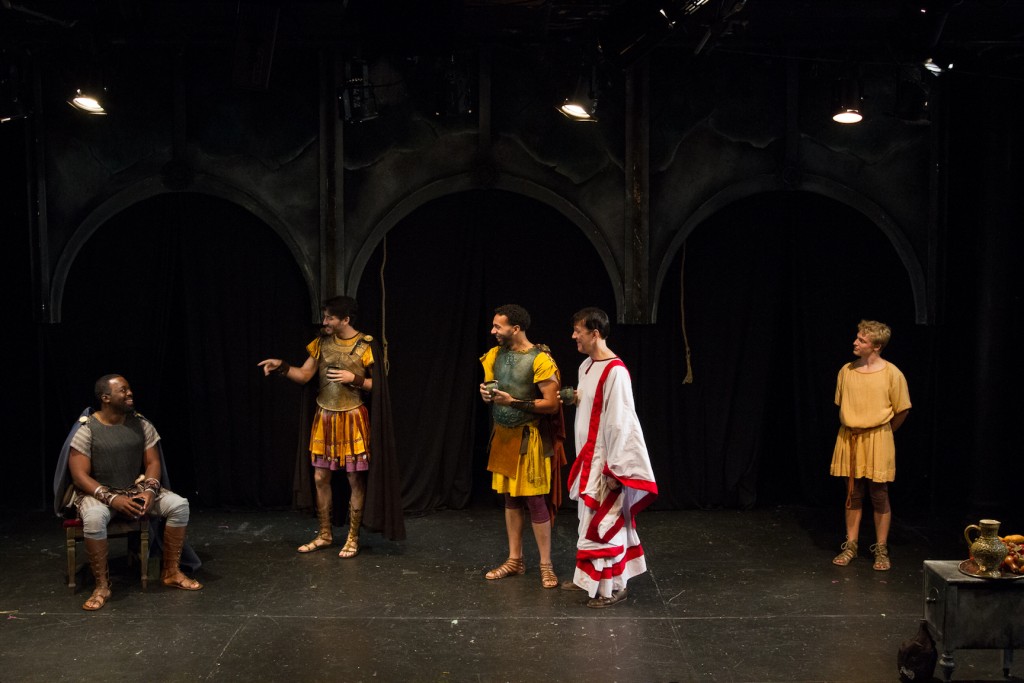

Brewer does a noble job of adapting the material into a solid Shakespearean structure without making the mistake of trying to mimic the style, which never works. He doesn’t try to force dialog into iambic pentameter and opts for a more natural rhythm rather than trying to sound too Elizabethan. Here and there are anachronistic moments, which are fine because the play’s out of its own time to begin with (Shakespeare’s writing about something that took place 2000 years prior and we’re only 400 years hence); and his style is accessible with audiences not familiar with the source material. It’s very easy to become lost watching obscure Shakespeare plays with which one isn’t familiar—and there’s none of that here. To add dimension, Brewer, with the assist from Cristina Lundy’s fine direction, fleshes out secondary characters despite their being very little source material to work with (or none, as some figures never existed at all in the original). Caius (funny Erik Olson) is the prince’s bumbling servant who can’t figure out how to manage the chamber pot situation while visiting another’s home—providing some much needed comic relief; Lucrece’s Lady-in-waiting, Mirabelle (tough and confident Gabby Beans) is loyal, no-nonsense and more aware than anyone in the cast; and her boy, Spurius (terrifically funny and talented Pat Dwyer) also adds a very Shakespearean dimension as the not-bright but very loyal and sweet tertiary character.
Coupled with strong performances by Leighton Samuels (Sextus), Shawn Williams (Collatinus), Aaliyah Habeeb (Lucrece), the cast delivers the difficult material remarkably well. Though the audience is warned of nudity prior to the start of the play, it is happily not the victim who is exposed, as expected. Rather Sextus’ rotten soul is displayed early on in the play as he parades himself stark naked—inappropriately, unapologetically—in front of visiting lady, Mirabelle.
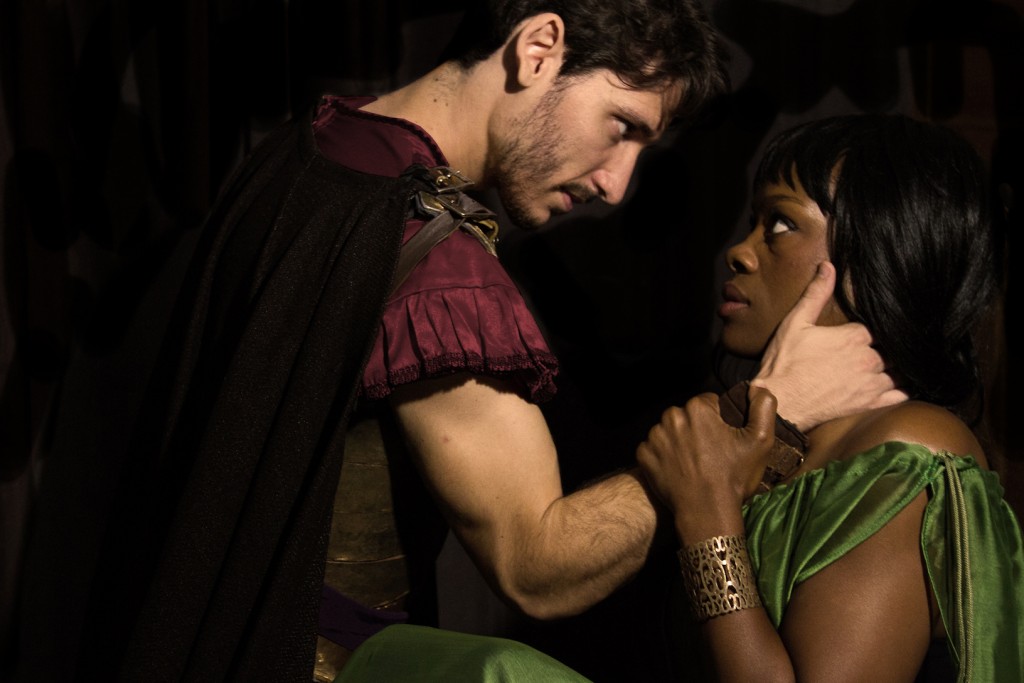

NYSX’s productions are rarely one-dimensional, which makes them all the more special. Buoying the strength of the performances and material, atmosphere plays an enormous role. Despite being a relatively small, independent company, Elivia Bovenzi’s costumes (as always) are extraordinary. With the feel of a professional company’s work, her vivid Roman-esque designs are unique, beautifully hued and complementary and should be considered for whatever awards are in the offing. When director Lundy takes these sumptuous colors and costumes and uses live actors to create stunningly beautiful tableaux vivants in order to illustrate certain scenes (a curtain is lifted and the characters are viewing “paintings” of historic scenes—e.g. Achilles battling Hector—while we see the representation by actors frozen on stage in heroic poses). Joseph Napolitano’s sparse yet elegant set, along with Jane Chan’s sultry lighting augment the remaining look and feel of the production, providing an expensively produced “feel” to the play. Kudos.
Sadly, despite all the work that must have gone into it, The Rape of Lucrece only ran (as scheduled) ten days and ended last week. But NYSX’s accomplishment must be noted—not just for their commitment to the outer edges of Shakespeare’s works, but for the professionalism with which they do it. This play would not have been included on even some of the most ardent Shakespeare lovers’ bucket lists, but it’s important for a larger understanding of his oeuvre . . . and anyone who had the opportunity to see it is all the richer for it.
The Rape of Lucrece. Ran October 13-22 at Teatro Latea at The Clemente (107 Suffolk Street on the Lower East Side). www.shakespeareexchange.org
Photos: Martin Harris


